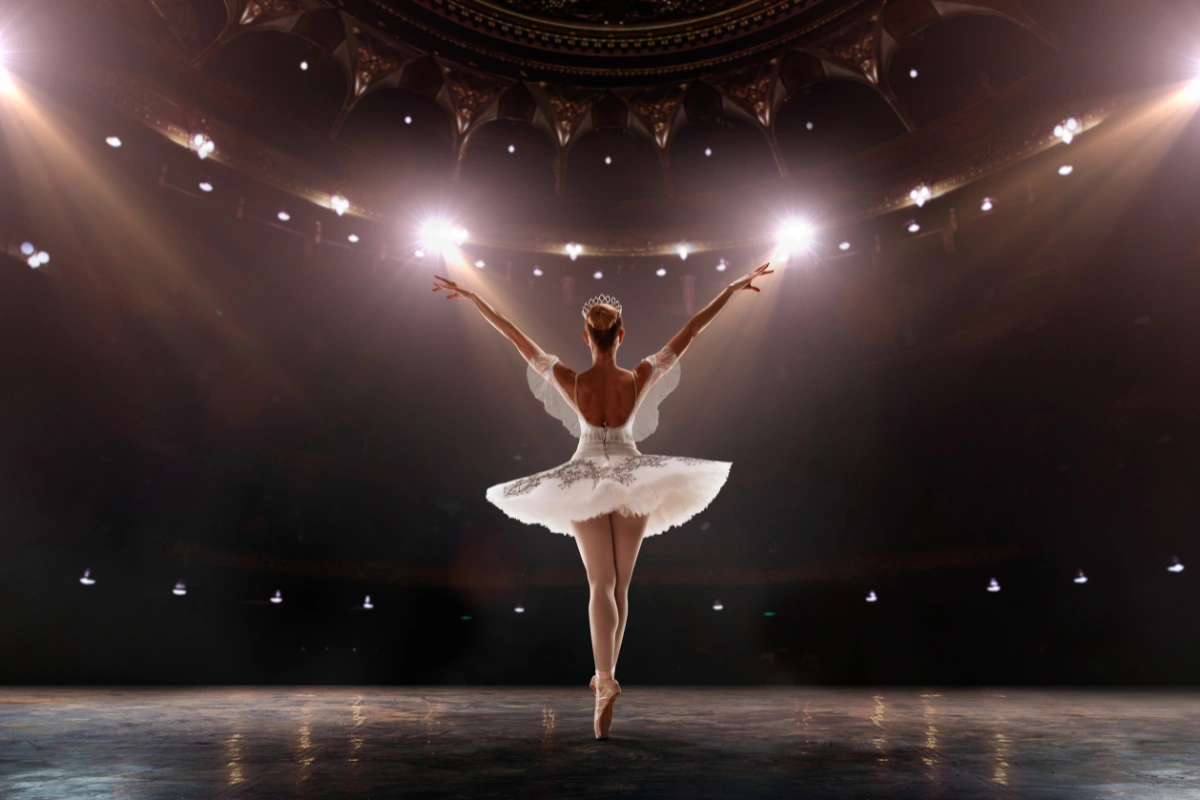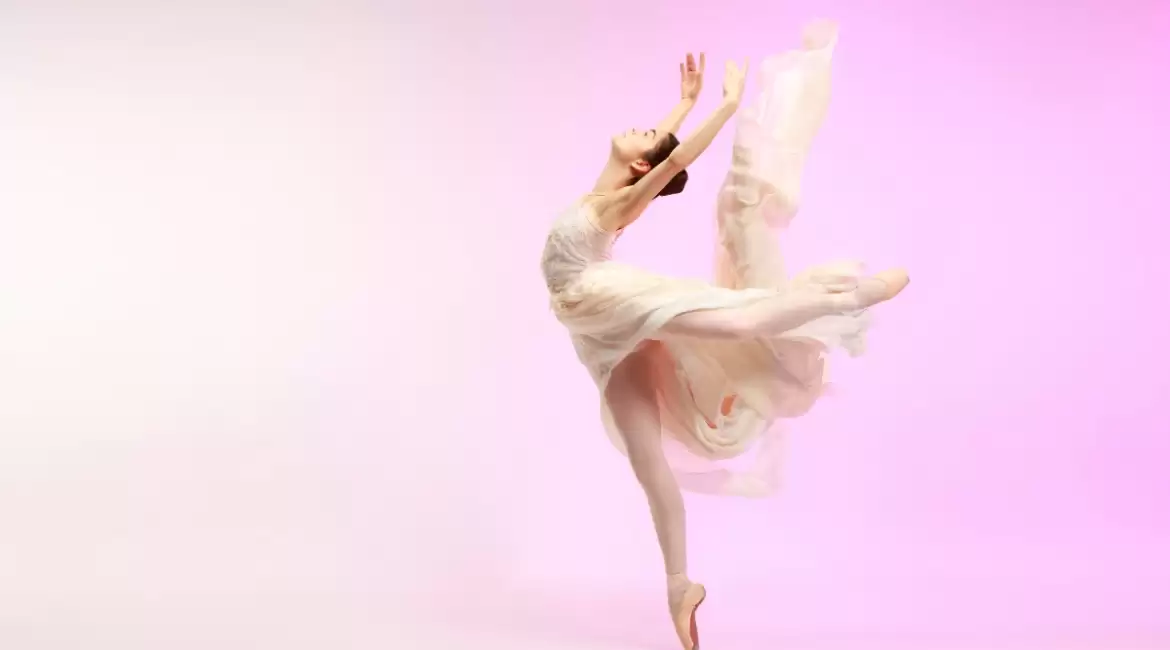Ballet, with its ethereal beauty and mesmerizing grace, stands as a timeless art form that has captivated audiences for centuries. Rooted in rich cultural traditions and steeped in history, ballet transcends mere movement to become a profound expression of human emotion, storytelling, and artistic mastery. From the grandeur of classical productions to the innovative experimentation of contemporary works, ballet encompasses a diverse spectrum of styles and techniques, each with its own unique allure and charm. In this exploration of “What is Ballet?” we delve into the essence of this captivating art form, tracing its origins, evolution, and enduring impact on the world stage. Join us on a journey through the enchanting world of ballet, where movement becomes poetry, and the stage becomes a canvas for the human spirit to soar.
What is Ballet?
Ballet is an intricate and mesmerizing form of theatrical dance characterized by its highly structured steps and movements, which blend seamlessly with music and stage design to convey a rich tapestry of emotions, narratives, atmospheres, and themes. Originating from the Italian word “balleto,” itself derived from “balle,” meaning “dance,” ballet has deep roots in human expression and cultural heritage.
Its etymology can be traced even further back to the Latin term “ballare,” encapsulating the essence of movement and rhythm intrinsic to the art form. From its earliest origins to its evolution into a refined theatrical spectacle, ballet has transcended time and geography to become a revered tradition in the performing arts, captivating audiences with its grace, precision, and storytelling prowess.

Ballet History
The history of ballet spans centuries, tracing its origins to Renaissance Italy where it emerged as a refined form of court entertainment. During this era, dancing and music held significant importance in the extravagant festivities of royalty, and ballet flourished as a cherished art form taught to Italian nobility.
Its journey continued as it transcended borders, arriving in France during the 16th century with the marriage of Italian noblewoman Catherine de Medici to King Henry II, an ardent supporter of the arts. Their patronage laid the foundation for ballet’s development within the French court, marking the beginning of its evolution into a more structured and codified art.
The pivotal role of King Louis XIV in the advancement of ballet cannot be understated. His establishment of the Académie Royale de Danse ballet school and appointment of Jean-Baptiste Lully as director of the Paris Opera propelled the art form to new heights, culminating in the formation of the illustrious Paris Opera Ballet. It was during this period, around 1681, that the first ballerinas graced the stage, solidifying ballet’s place as a revered theatrical spectacle.
The allure of ballet transcended the confines of Europe, spreading to Russia, Denmark, and beyond, where it found fertile ground for further innovation and creativity. In Russia, in particular, ballet took on a distinctive flavor, giving rise to iconic performances such as Swan Lake and The Nutcracker, which captivated audiences on the stages of Russian theaters.
Despite its aristocratic origins, ballet underwent a transformative journey, evolving from a courtly pastime reliant on royal patronage to a captivating artistic expression accessible to all. As it found resonance across diverse cultures, ballet diversified into various styles, each imbued with its own unique identity and cultural influences, enriching the tapestry of this enduring art form.
Types of Ballet
Classical Ballet
Classical ballet stands as a cornerstone of the ballet world, embodying elegance, grandeur, and timeless narratives. Dating back to its origins, classical ballet epitomizes the epitome of sophistication and spectacle, boasting a rich tapestry of elements that elevate it to an unparalleled art form. At its heart, classical ballet showcases the harmonious synergy between graceful movement, live orchestral music, intricate costumes, and lavish set designs, transporting audiences into enchanting realms of storytelling and emotion. Iconic productions such as Swan Lake, The Sleeping Beauty, and The Nutcracker epitomize the essence of classical ballet, captivating generations with their enchanting tales and breathtaking choreography.
Romantic Ballet
The Romantic Ballet era emerged as a poignant expression of emotion and imagination, weaving ethereal tales of love, longing, and transcendence. Amidst the cultural fervor of the 19th century, Romantic Ballet captured hearts with its ethereal beauty and emotive storytelling. Characterized by delicate pointe work, ethereal tutus, and evocative narratives, Romantic Ballet transports audiences into realms of dreamlike enchantment and emotional resonance. It is a celebration of passion, fantasy, and the human spirit, leaving an indelible mark on the ballet landscape and inspiring generations of dancers and audiences alike.

Neoclassical Ballet
In the vibrant tapestry of ballet evolution, neoclassical ballet emerges as a dynamic fusion of tradition and innovation. Born in the revolutionary spirit of the 1920s, neoclassical ballet heralds a departure from the ornate romanticism of its predecessors, embracing a minimalist aesthetic and a focus on pure movement and athleticism. Spearheaded by visionaries such as George Balanchine, neoclassical ballet eschews elaborate costumes and narrative constraints, allowing for a bold exploration of form, technique, and musicality. It is a celebration of virtuosity and precision, pushing the boundaries of classical technique while embracing the fluidity of contemporary expression.
Contemporary Ballet
At the intersection of tradition and experimentation lies contemporary ballet, a vibrant tapestry of innovation and expression. Blending classical ballet technique with modern sensibilities, contemporary ballet pushes the boundaries of movement and narrative, offering a dynamic synthesis of tradition and innovation. Championed by trailblazers like William Forsythe, contemporary ballet embraces diversity of style and expression, incorporating elements of improvisation, floor work, and interdisciplinary collaboration. It is a celebration of individuality and creative freedom, offering dancers a platform to explore new realms of movement and expression while honoring ballet’s rich heritage.
Ballet Evolution
As ballet evolved over centuries, it gave rise to diverse training methods, each with its own unique blend of tradition, innovation, and technical prowess. From the graceful fluidity of the Vaganova Method to the anatomical precision of the Cecchetti Method, ballet training encompasses a rich tapestry of approaches designed to cultivate dancers of exceptional skill and artistry.
The Vaganova Method
Rooted in the esteemed traditions of French, Italian, and Russian ballet, the Vaganova Method stands as a testament to the synthesis of diverse influences. Developed by Agrippina Vaganova, this method harmonizes the romantic elegance of French ballet, the athletic precision of Italian technique, and the dramatic intensity of Russian expression. Dancers trained in the Vaganova Method embody strength, clarity, and grace, executing movements with a seamless blend of power and softness that captivates audiences and inspires admiration.
The Cecchetti Method
Named after its creator, Italian ballet virtuoso Enrico Cecchetti, the Cecchetti Method represents a meticulous approach to training that prioritizes anatomical awareness and holistic movement. Central to this method is a deep understanding of the body’s mechanics, enabling dancers to achieve perfect balance, poise, and control. Through a rigorous regimen of exercises, Cecchetti-trained dancers develop the agility and fluidity necessary to convey emotion and narrative with effortless precision, creating performances that are as technically impressive as they are artistically compelling.

The Bournonville Method
Hailing from the Royal Danish Ballet Company, the Bournonville Method exudes a romantic sensibility infused with technical rigor and musicality. Developed by choreographer August Bournonville, this method celebrates the joyous exuberance of ballet while maintaining a focus on precision and grace. Characterized by intricate footwork, buoyant leaps, and expressive port de bras, Bournonville-trained dancers embody a sense of ease and naturalness that belies the intense technical demands of the repertoire. Through seamless integration of movement and music, the Bournonville Method transports audiences to a world of beauty and enchantment.
The Royal Academy of Dance Method (RAD)
Drawing from a rich tapestry of ballet traditions, the Royal Academy of Dance Method (RAD) represents a synthesis of Danish, French, Russian, and Italian influences. Originating from the prestigious Royal Academy of Dance in England, this method places a strong emphasis on classical technique, poise, and precision. Through a structured curriculum and progressive syllabus, RAD-trained dancers develop a solid foundation in ballet fundamentals while cultivating artistic expression and performance skills. With its commitment to excellence and innovation, the RAD Method continues to inspire generations of dancers to reach new heights of achievement in the world of ballet.
Summary
Ballet, an art form of profound beauty and elegance, has a rich and storied history dating back to Renaissance Italy. Originating as court entertainment, ballet evolved over the centuries, spreading throughout Europe and beyond. Classical ballet, characterized by its elaborate costumes, intricate choreography, and storytelling, emerged as a hallmark of the genre, producing iconic productions like Swan Lake and The Nutcracker. Other styles, such as Romantic, Neoclassical, and Contemporary ballet, added layers of innovation and expression to the art form, pushing boundaries and captivating audiences with their emotional depth and technical brilliance. Alongside these styles, various training methods, from the Vaganova to the Cecchetti, have honed dancers’ skills and shaped the evolution of ballet. Today, ballet continues to thrive as a vibrant and dynamic form of artistic expression, enchanting audiences around the world with its timeless beauty and evocative storytelling.


Leave a reply